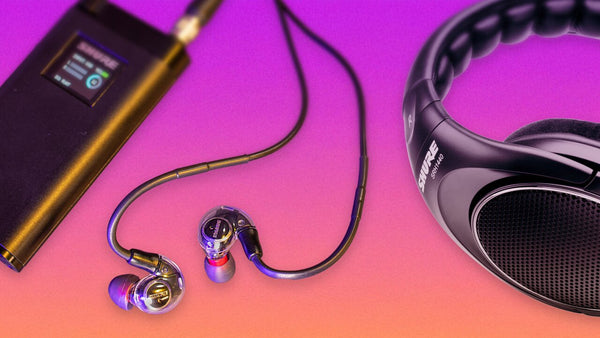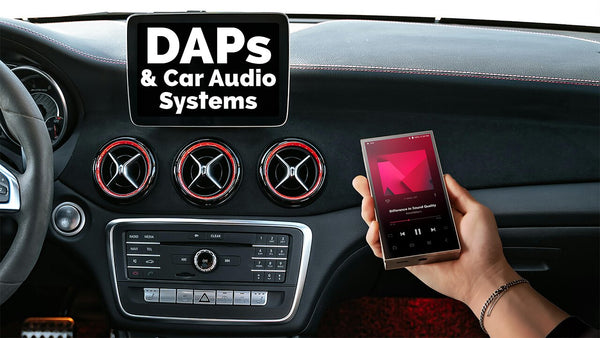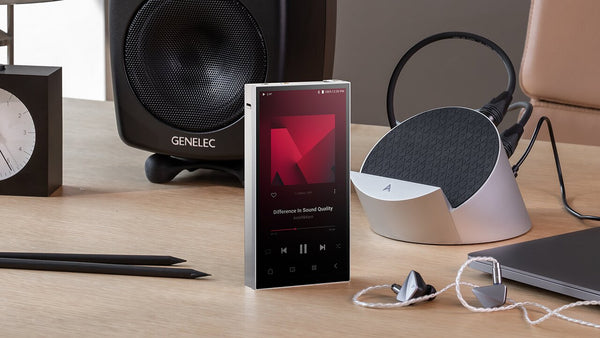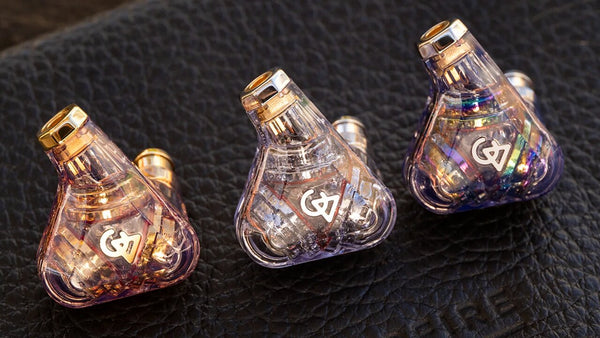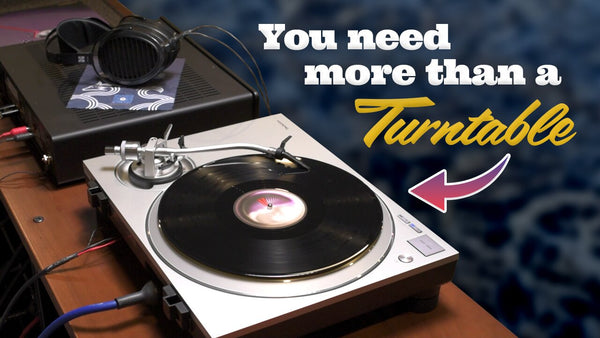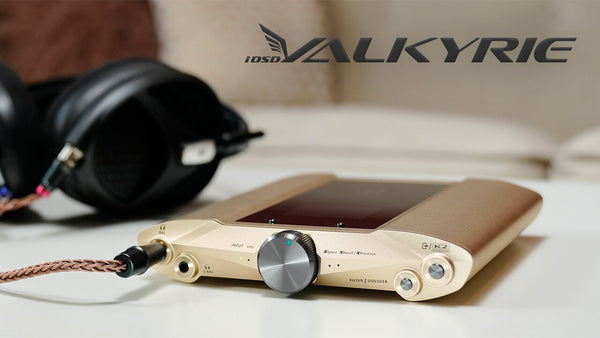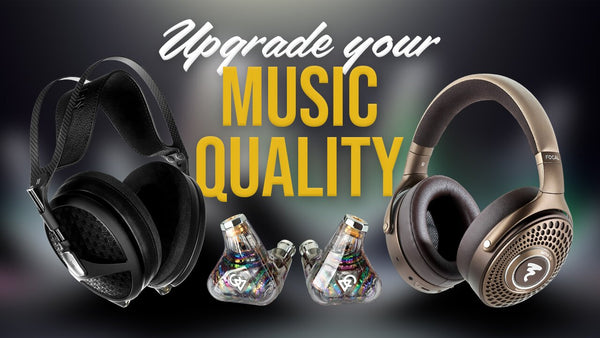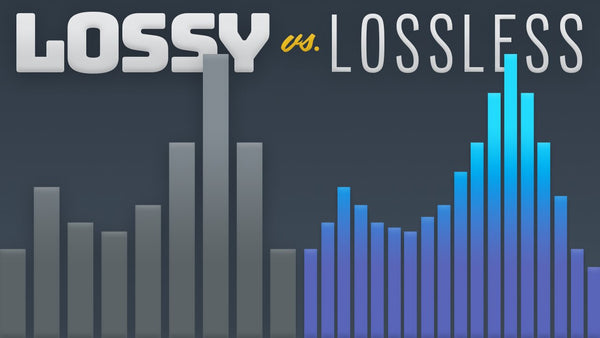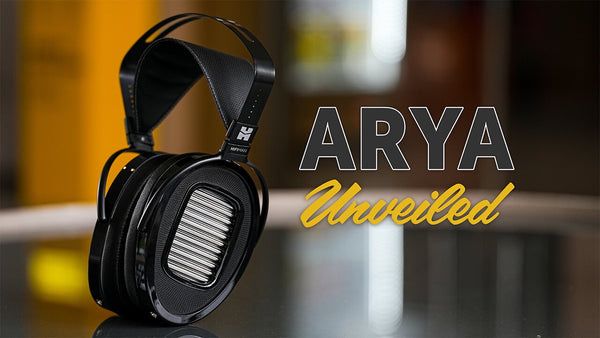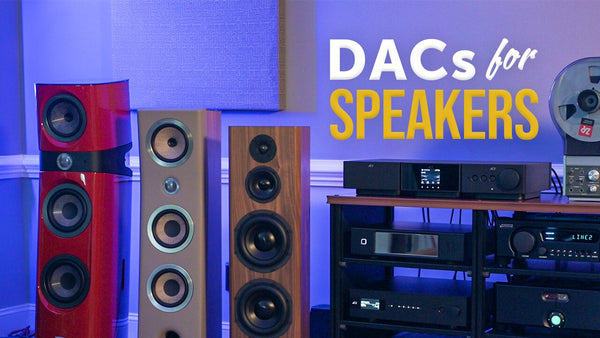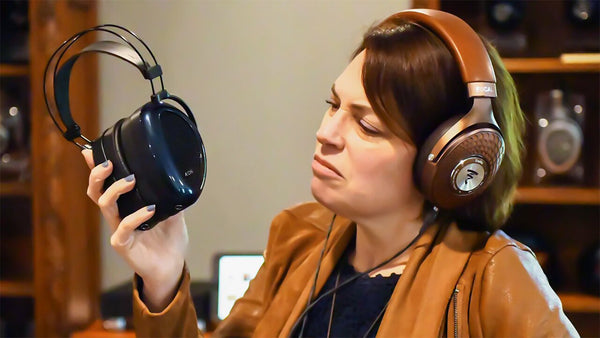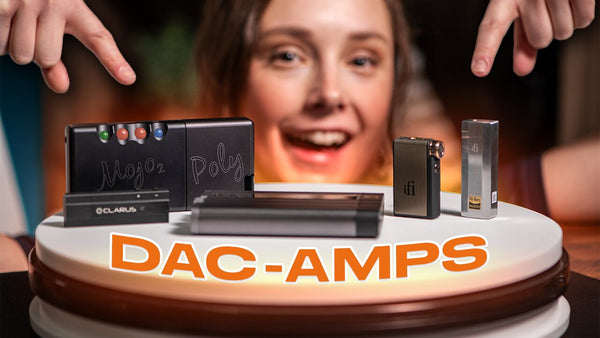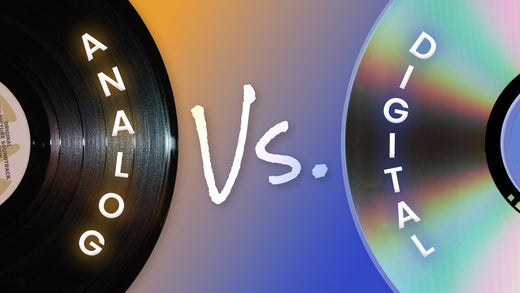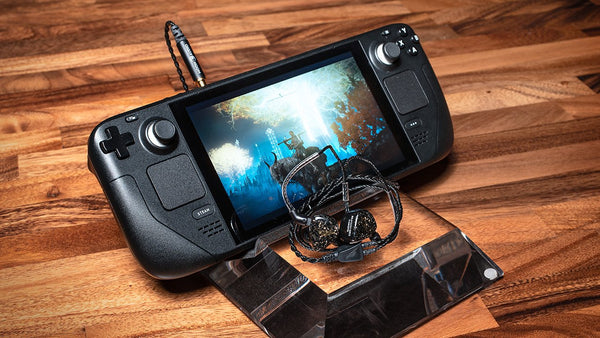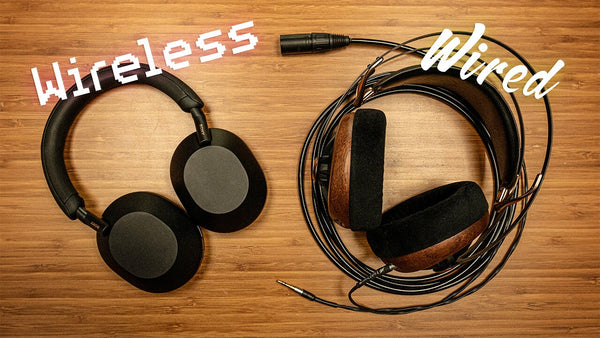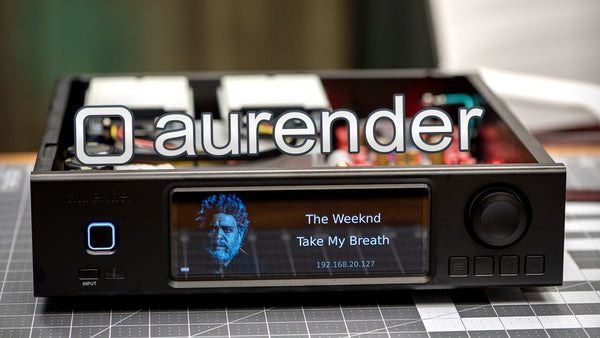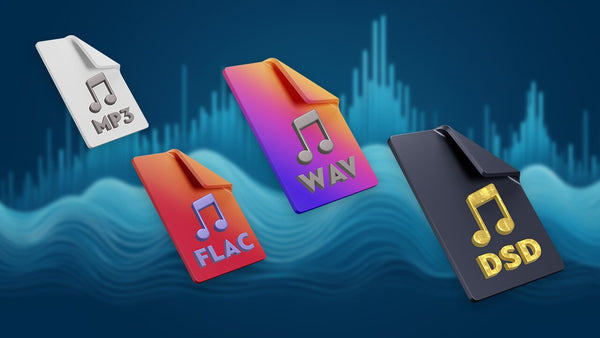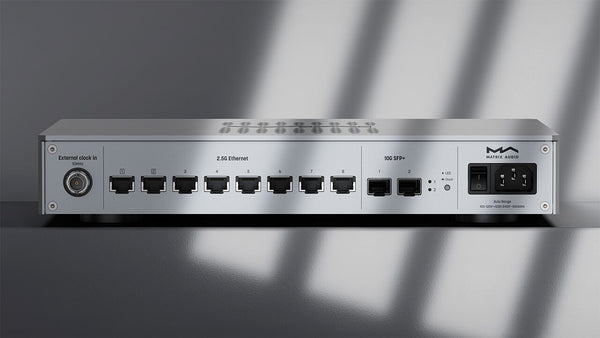Finding Calm: Binaural Beats & Headphones for Stress Relief
Read Time: Approx. 11 min.

Relax and Unwind with Binaural Beats
It's no secret that sound can be therapeutic. From flowing water and soft music to ASMR recordings and white noise, people use music and sound to tune out the world and tune into themselves. Among the many forms of sound therapy, Binaural beats serve as a great escape from the stressors of everyday life. They have a range of physical and mental health benefits, from better sleep to pain relief and enhanced creativity. So, what exactly are binaural beats, how do they work, and what type of headphones should you use to listen to them?
The Science Behind Binaural Beats
Binaural beats are an auditory illusion created when two slightly different frequencies are played separately into each ear. The brain perceives and processes the difference between these frequencies as a single, unified auditory beat in hertz. For example, if you hear a 440Hz tone in your left ear and a 445Hz tone in your right ear, your brain would interpret this as a 5Hz tone. In essence, your brain takes the net difference between the two tones and creates its own brain wave, which is the binaural beat. It has been claimed that this new third tone prompts brain cells to begin firing at the same frequency as the tone – a process called entrainment. (You may hear binaural beats called brain wave entrainment therapy, a form of sound wave therapy.) Since you're receiving a different frequency in each ear, you won't get the full effects of binaural beats if you don't use headphones or only wear one earbud.
Brain Waves
In order to truly understand what binaural beats are and how they affect us, we've got to take it back to grade school and discuss brain waves. Our brain is comprised of billions of neurons that emit electrical pulses to communicate. These electrical pulses create a signal, and that signal is our brain waves. So within our brain, we have five sets of brain waves that emit different frequency ranges and this brain activity affects us differently. These five brain waves are Delta, Theta, Alpha, Beta, and Gamma.
For example, Delta waves are there when we're asleep, typically emitting a frequency range from 0-0.5Hz to 4Hz. We never really get to experience Delta waves because we're generally asleep or very close to asleep. Theta waves are usually from 4Hz to 8Hz and are experienced in a drowsy, almost euphoric state. Then we have alpha waves which occur between 8Hz and 13Hz when you're very calm and relaxed. You're awake but you're very relaxed—calm, cool, and collected. Beta waves, which occur between 13Hz and 30Hz, are where we live most of the time. You're awake—not super relaxed but also not super amped. Alert enough to comprehend, concentrate, and problem-solve. Gamma waves are the highest-frequency brain waves occurring from 30Hz up to 100+Hz, and they promote a super hyper-focused, attentive state. A skydiver would be in a gamma wave state, focusing on when to pull their parachute.
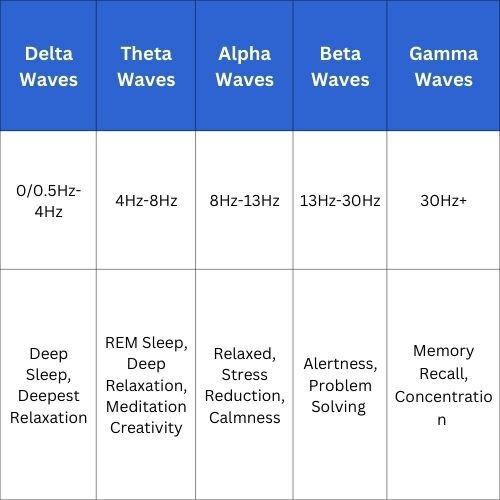
What frequency range should I look for in headphones for optimal binaural beat experience?
Ideally you want headphones with a wide frequency response, typically 20Hz to 20,000kHz or broader. Headphones with good bass response and accuracy will help you feel the pulsating rhythms created by binaural beats more effectively.
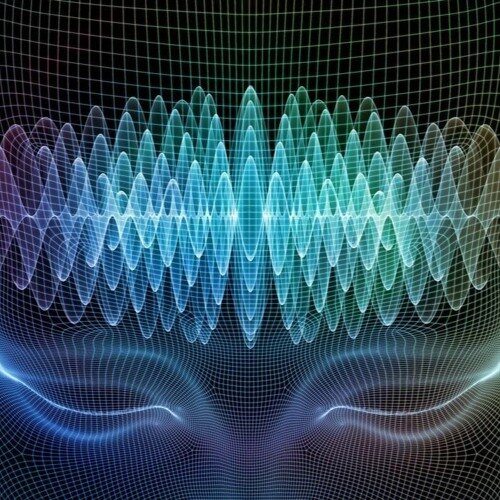
So, you can use specific binaural beats to guide your brain into a desired state of consciousness. If you're working on a demanding project at work and struggling to maintain focus, listening to binaural beats designed for concentration can help you achieve a more centered, productive mindset. On the other hand, if you're feeling drained after a hectic week and yearning to relax and unwind, you can turn to binaural beat frequencies crafted for relaxation.
In the example above, 5 Hz is associated with theta brain waves, which are known to facilitate deep relaxation. The theory here is that if you want to achieve this relaxed state and reduce stress, you would listen to theta binaural beats to increase theta brain wave activity. When you listen along, your brain is encouraged to follow and produce the brain waves associated with the frequency you are hearing. Now, for a binaural beat to work, the tones sent to your ears must have frequencies of less than 1500 Hz, and the difference between the two tones can’t be more than 40 Hz.
Binaural beat recordings may not sound like anything you have heard. These low-frequency tones are delivered in a pulsating fashion and are often laid underneath meditation music or nature/ambient sounds. Binaural beats are in contrast to monaural beats, which also feature the combination of two frequencies, but with the convergence of the tones happening before they reach the ears. It should be noted that binaural beats are not the same thing as binaural audio recordings, which are recorded with special microphones and are known to produce an immersive, three-dimensional listening experience.
Why do People Listen to Binaural Beats?
Wellness Benefits of Binaural Beats
- Pain Relief
- Deep Sleep
- Allergy Relief
- Stress Reduction
- Improved Mood
- Relaxation & Meditation
- Increased Creativity
- Enhanced Cognition
- Improved focus, attention, and memory
Usage Scenarios
- While studying
- Concentrating during work
- Before taking an exam
- During meditation
- Before sleep (it's OK if you fall asleep with binaural beats playing)
- Before or during creative tasks
- To regulate emotions
- During a workout

Picture this: You're at work, and your head has been throbbing for hours. Tylenol or your coping mechanism of choice isn't cutting it. Searching for relief, you stumble upon this article and decide to try listening to a binaural beat recording. You find a playlist aimed at "instant migraine relief" that features alpha beats. Headphones situated on your tender head, you hit play and hope for the best. You quickly find yourself lulled into calm by the sound of pulsing waves set against nature sounds. Fifteen minutes later, your headache has magically disappeared and you're returned to your beta state.
Not everyone will experience this type of effect from binaural beats— at least not every time or for every application. However, people who listen to binaural beats for a variety of physical and mental health benefits have reported profound success from listening to these curated soundtracks. A search for binaural beat audio tracks on YouTube will reveal hundreds of recordings for a variety of ailments and mind states. You can also find guided meditations featuring binaural beats. Additionally, there are many binaural beat recordings for sale on various websites and apps.
The scientific community is mixed on the efficacy of binaural beats. There is much anecdotal evidence pointing to the positive effects of binaural beats, but some studies have shown the use of binaural beats to be no more effective than listening to regular sound recordings or music. A placebo effect is certainly possible, but this may be said of many remedies. And the act of slowing down and placing one's focus somewhere can be deeply calming in and of itself. At the very least, you will enjoy some "downtime" in the presence of some unique sounds. Binaural beat recordings are considered to be safe, with some people reporting mild side effects like nausea or dizziness at certain frequencies. If you notice any sensitivity to a certain binaural beat recording, it's best to turn it off and search for an alternative option.
Do I Need Headphones to Listen to Binaural Beats?
Short answer: Yes. Because binaural beats work from different tones being sent to each ear, you need to listen to binaural beats on headphones to get the full effect. Having just one earbud in won't deliver the desired state you're looking for, and listening to a recording with your head slammed up against a speaker is just going to ruin your hearing. Now there are no strict rules as to what headphones you can listen to binaural beats with, but if you are in the market for new headphones, and you plan to listen to binaural beats, you will want to keep these guidelines in mind.
Use Closed-Back Headphones
When attempting deep relaxation, you want the least possible outside distraction. Closed-back over-ear headphones are great for isolating outside noise from creeping in and disrupting your listening experience. In contrast, open-back headphones have vented ear cups that are notorious for leaking sound and in turn, letting outside sound in. Closed-back headphones will give you a more immersive, "in your head" listening experience. Alternatively, you could use IEMs, or in-ear monitors that sit in your ear canal, creating a seal that will block outside sounds. A further option for a sound-isolating experience would be noise-canceling headphones, with technology that will block outside sound, allowing you to listen to binaural beats without the distraction of ambient sound in your environment.

Choose Comfortable Headphones
When you are looking to get into a relaxed or meditative state, the last thing you want is a headphone that's uncomfortable. You want your headphones to "disappear" on your head so that your primary focus — your only focus — is on the binaural beats coming from them. Now, headphone comfort is subjective, so the important thing is to find the most comfortable pair for you. They shouldn't be too big or have a tight clamping force. The ear cups should be the right fit for your ear size and shape, and the padding should be ample to keep your ears happy during your listening sessions.
Opt for a Neutral Frequency Response
Headphones are tuned in various ways, so much so that certain frequencies are given precedence over others for a desired effect. Depending on the tuning of a headphone, elements of recordings may become magnified or recessed. The sound can be bassy (lower frequencies over-emphasized), warm (smooth and cozy), bright (upper frequencies over-emphasized), or resolute (detailed), for example. You can read more in our Audio Sound Signatures guide. For binaural beats, you will want a pair of headphones or IEMs with a more neutral frequency response. The reason is that you need to be able to hear the varying tones distinctly in each ear. You don't want a headphone with coloration, bumped-up bass, or too much brightness. You want to hear the sounds as true-to-recording as possible.
Headphones for Binaural Beats: Our Top Picks
Here at Moon Audio, we carry a curated collection of headphones catering to your desired needs. With binaural beats in mind, we've gathered a list of our top closed-back headphones, IEMs, and noise-canceling headphones for relaxation, stress relief, and everything in between.
Dan Clark Audio AEON 2 Closed Portable Headphones
If you're looking for a portable, great-sounding, and super-comfortable audiophile headphone for under $1,000, you can't go wrong with the AEON 2 closed-back headphone from Dan Clark Audio. It's got a neutral sound with a bit of warmth to it, but not at the expense of detail and clarity. The AEON 2 features generously padded teardrop-shaped earcups that mimic the shape of the human ear for a super-comfortable fit. The bass is tight and punchy; the midrange is clear and present, and the treble is relaxed, meaning you won't get harsh high notes. This is a wonderful headphone for kicking back and enjoying long listening sessions.
Dragon Cable Recommendation: The Silver Dragon Premium headphone cable will add top-end sizzle while enhancing detail retrieval.
- Sensitivity: 92dB
- Weight: 328g/11.6oz
HiFiMan Arya Organic Headphones
The HiFiMan Arya Organic Headphones are the latest iteration in the best-selling Arya line. Featuring HiFiMan's patented "Stealth Magnets" technology, the Arya Organic Headphones minimize wave diffraction and improve phase response, resulting in a cleaner, more transparent sound. The Arya Organic is a balanced and warm-leaning open-back headphone with amazing musicality — it's the Arya Stealth with a warm, fuzzy blanket on. You'll get a spacious, natural soundstage that allows the intricate details of binaural beats to shine through so you can enjoy a relaxing, melodic experience. The headphones are incredibly comfortable with large, asymmetrical ear cups and plush ear pads. The Arya Organic Headphones will deliver you an unparalleled listening experience.
Dragon Cable Recommendation: The Silver Dragon Premium Headphone Cable will tighten up the low end and enhance details by finding "lost" middle and high frequencies.
- Frequency Response: 8Hz-65kHz
- Sensitivity: 94dB
- Weight: 440g/.97lbs
Sony WH-1000XM5 Wireless Noise-Canceling Headphones
The Sony WH-1000XM5 Wireless Noise-Canceling Headphones are an amazingly good value considering the quality of sound and number of features provided at this price point. The build quality is pretty standard for this class of headphones. It won’t take a beating but if you take care of it, it will take care of you. Sony has been around the block for some time now, and they understand not only what the consumer wants, but how to beat out their competition. The XM5 is likely the best you can buy right now for noise canceling. The active noise cancellation technology is top-tier, allowing you to block the outside world around you and hone in on binaural beats. The WH-1000XM5 incorporates the best ideas from the competition as well, so you can be assured you're getting everything you possibly can for this price point.
Dragon Cable Recommendation: Bronze Dragon Portable Headphone Cable for a wired listening experience
- Frequency Response: 4Hz-40,000Hz
- Sensitivity: 102dB
- Weight: 8.82oz
Sennheiser Momentum 4 Wireless Headphones
The Sennheiser Momentum 4 Wireless Headphones offers superior sound, cutting-edge technology, and a modern design aesthetic. It redefines your premium headphone experience by reproducing the balanced depth and precision of studio-quality audio. Active Noise Cancellation and Transparent Hearing functionality allow you to experience audio on your terms. The advanced Active Noise Cancellation offers three modes tailored to different environments. Whether you're trying to relax and unwind after a stressful day or focus on a big project, you can enjoy binaural beats without interruptions. And with the Transparent Hearing feature, you can enjoy music while still being fully present in whatever you’re doing. Featuring a genuine leather head strap and premium earcups, these headphones deliver superior comfort.
Dragon Cable Recommendation: The Bronze Dragon Portable Headphone Cable will add musicality and warmth
- Frequency Response: 6Hz-22kHz
- Sensitivity: 106dB
- Weight: 293g/10.3oz
Meze Advar IEMs
The beautifully designed Advar IEM is the latest offering from Meze Audio, makers of the renowned Empyrean headphones as well as the Rai Solo and Rai Penta IEMs. The Advar is an impressive-sounding IEM, offering much more than the entry-level Solo and coming close to the performance of the Rai Penta. There's no surprise that the infamous Meze soundstage still manages to wow and amaze with each new product and iteration that they come out with, but it's the low-end presence, mid-level energy, and the high-frequency roll-off of the Advar that makes for a smooth, dynamic, and fun IEM.
Dragon Cable Recommendation: The Bronze Dragon MMCX IEM Cable for a balanced sound with warmth and detail.
Dragon Cables
There are a lot of reasons why you need to make sure your audio cables are not afterthoughts. When you're paying for high-quality sound in a high-end pair of headphones you want every link in your signal chain to be of the utmost quality. Sometimes, stock audio cables are an afterthought by manufacturers who put so much work into crafting the perfect headphones. That's where we step in, to provide a solution to the problem.
Our HiFi Audio Dragon Cables bring out more of what you love in your music and audio gear. If you love your headphones but wish they had a bit more top-end sparkle - a Silver Dragon Headphone Cable would be a great option. If your USB cables keep dying - as many stock cables do - then check out our quality USB Audio Cables. We say time and time again that materials matter, and our audio cables and custom geometries actually help to bring out those desired properties in your gear and music. We make tons of custom options for our customers so that you can get the right HiFi Audio cable for your exact needs. If you have any questions feel free to Contact Us and we'll be more than happy to help.
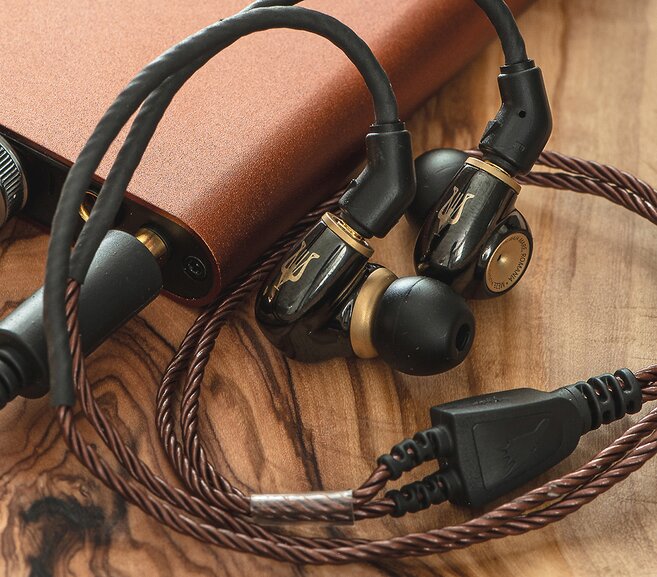
Pictured: Meze Advar IEMs with the Bronze Dragon MMCX IEM Cable and iFi Hip DAC 2
Generally, stock audio cables are manufactured with subpar materials, metals with impurities, poor geometries, and an overabundance of layers to make them look and feel like a fire hose. Inconsistency and lack of quality control in stock cables can lead to poor sound quality and a veiled sound vs. what the musician intended for you to hear and feel from the music. Dragon Audio Cables are handcrafted with the highest standards and made to order according to your specific needs. At Moon Audio, we create a custom cable for you using the highest quality UP-OCC silver or copper conductors that can be manufactured. UP-OCC metals are void of impurities and are optimized for signal transfer and sound quality. We have one of the largest collections of audio and headphone connection options available online and we create limitless audio cable options depending on your specific gear and needs.
Why Dragon Cables?
You’ve heard the saying that a chain is only as strong as its weakest link, right? Well, the same applies to your brand new audiophile-grade headphone or other audio components. The weakest link, in this case, is your stock audio cable or the cheap interconnects the manufacturer threw in the box just to get you up and running. Why is the audio cable always an afterthought, when it’s just as important as the rest of your system? At Moon Audio, we use the purest and best raw materials in our cables to unveil your music. We believe that materials matter and your audio cables should have the same care and craftsmanship that manufacturers put into their audio components and headphones. Audio cables are ultimately the connection to your music. The fact remains that cabling is often considered the last priority to that of the main product and a means to cut down the overall production costs. It’s as simple as that. Dragon Cables elevate every note - as if you were hearing your favorite music for the very time.
Escape Into the Bliss of Binaural Beats
Whether you're looking for stress relief or motivation to concentrate and stay focused, binaural beats offer a unique way to enjoy music and guide your brain into a desired state of consciousness. There are hundreds of binaural beats playlists crafted for relaxation to help you ease into a calmer state of mind. The perfect playlist combined with the perfect pair of headphones will deliver you a blissful listening experience. Closed-back headphones like the Dan Clark Audio AEON 2 Closed Portable Headphones, are great for at-home listening sessions when you want to be comfortable and not disturbed. If you find yourself needing the most relief while at work or in a public setting, you can't go wrong with the Sennheiser Momentum 4 Wireless Headphones or Sony WH-1000XM5 Wireless Headphones. Both headphones are wireless for freedom of movement and equipped with active noise cancellation so you can quiet the world around you and hone in on an immersive binaural beat listening experience. Pair them with our Bronze Dragon Portable Headphone Cable for a wired listening experience and add even more warmth and musicality to your audio.
In today's fast-paced and demanding world, many people struggle with high levels of stress and anxiety, which can negatively impact both physical and mental health. Binaural beats offer a simple and accessible tool to help manage these challenges. By incorporating binaural beats into a regular relaxation process, you can help better manage stress, improve emotional well-being, and enhance your overall quality of life.
Featured Products
Related Videos
Astell&Kern SP3000T Review: 5 Reasons It's The Most Versatile DAP Ever
Will Spotify's "Music Pro" Redefine Hi-Res Audio Streaming?
HiFiMan Arya Organic Headphones Review & Comparison






